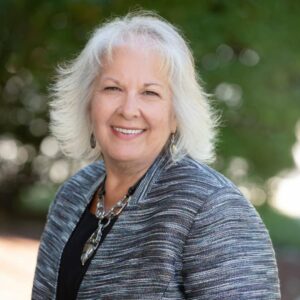Leaders of Tomorrow: Barry Berman
Those in the long-term care (LTC) industry say that Barry Berman’s work is ingenious, but the East Coast executive argues it’s nothing more than a result of common sense and compassion. Berman has been at the helm of the Chelsea Jewish Foundation since 1976, and it was three years ago that his innovative style of leadership received national attention. That’s when his community unveiled the country’s first assisted living facilities outfitted with technology to allow residents with amyotrophic lateral sclerosis (ALS) and multiple sclerosis (MS) to live independently, yet as part of a family environment.
The community—the Leonard Florence Center for Living—took the Green House® model of community living and specifically molded it to meet the needs of younger adults, who because of their debilitating diseases, are often forced to live out their remaining years in facilities designed for those much older than themselves. The concept is an evolution of sorts, Berman says.
“We originally were designing these ‘houses’ for the elders that we serve,” he recalls. “But as we got into the design process I quickly realized that these were going to be so special that there must be another skilled population—one where individuals were still alert and young—who might need a different lifestyle than a traditional nursing home.”
Berman and his team of managers decided to focus on individuals suffering from ALS and MS, two diseases that rob individuals of their physical independence, while keeping their mental state intact. Berman knew he was on the right track when he attended a national symposium on the diseases and was introduced to Steve Sailing, a 37-year-old architect who had recently been diagnosed with ALS. Sailing shared his concern over where he would eventually live once his disease progressed to a point that it left him unable to care for himself as a young single person.
Sailing became instrumental in the design of the Leonard Florence Center for Living. At the time of their first meeting, Sailing was still driving a car and the disease had only affected his speech. Today, Sailing is one of about 40 residents living in the foundation’s Green House home. His disease has progressed to a point where he is only able to move his eyes, but thankfully at this home that’s all he needs to do the things he loves.
Through technology, Sailing and his nine roommates can close the window blinds, signal the elevator and change the thermostat with the movement of their eyes. “It gives him back life as much as technology allows,” Berman says.
Berman lives for people like Sailing. It’s what gets him out of bed in the morning and what drives his visions for the future. As rewarding as Berman’s newest home is, it comes at a cost. The residents that fill the community have diseases that require the highest level of care with the lowest rate of reimbursement. Therefore, much of Berman’s time is spent on public relations and philanthropy in his community.
A second fully automated ALS residence is scheduled to open this year, with several others in the planning phase. Berman loves telling others the secret of his success. It comes by simply imagining yourself in another person’s shoes and then giving them what they need to live a life equipped with all the basic human needs. That’s the type of treatment he wants his residents to have and what he will keep fighting for until the day his facility is no longer needed.
“My goal was to open this community to ALS residents and I hope I am able to the see the day when we need to close it,” Berman said. “But until there is a cure, our goal will be to help others build residences just like this around the country.”
Julie Thompson is a freelance writer based in Dayton, Ohio.
I Advance Senior Care is the industry-leading source for practical, in-depth, business-building, and resident care information for owners, executives, administrators, and directors of nursing at assisted living communities, skilled nursing facilities, post-acute facilities, and continuing care retirement communities. The I Advance Senior Care editorial team and industry experts provide market analysis, strategic direction, policy commentary, clinical best-practices, business management, and technology breakthroughs.
I Advance Senior Care is part of the Institute for the Advancement of Senior Care and published by Plain-English Health Care.
Related Articles
Topics: Articles , Executive Leadership , Finance , Leadership , Risk Management , Staffing











